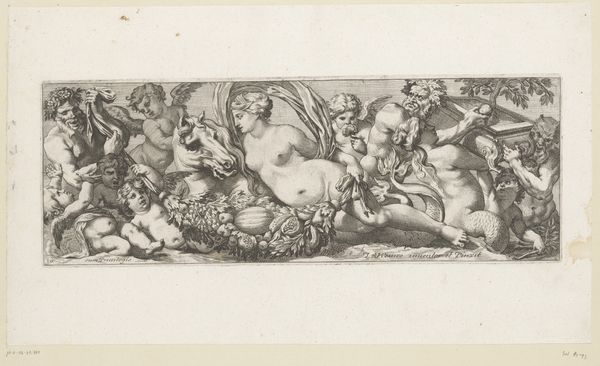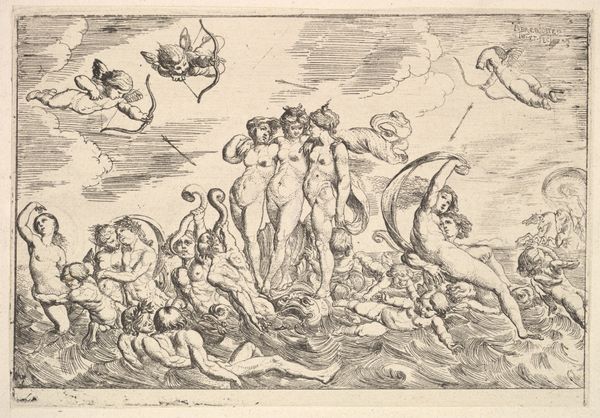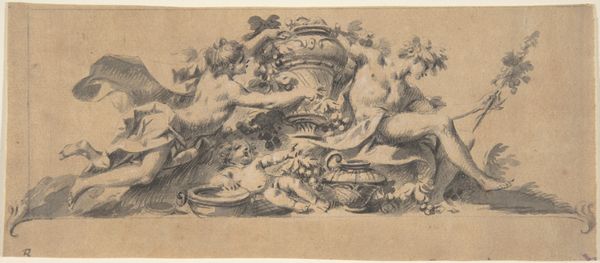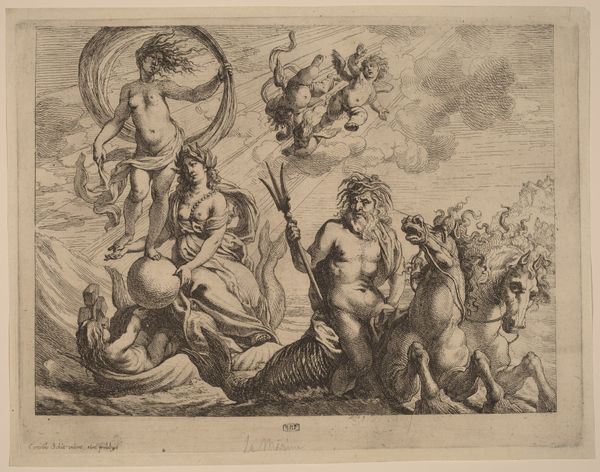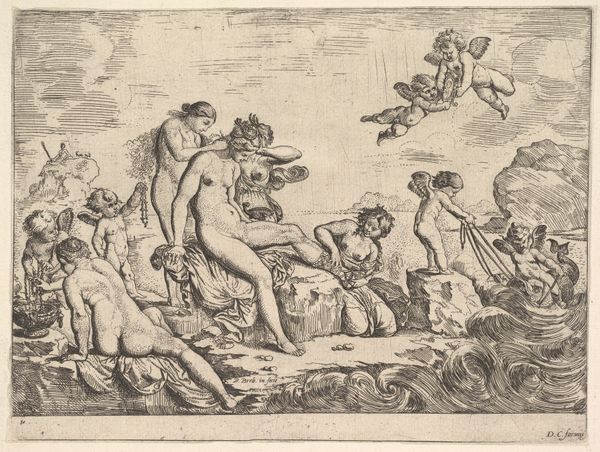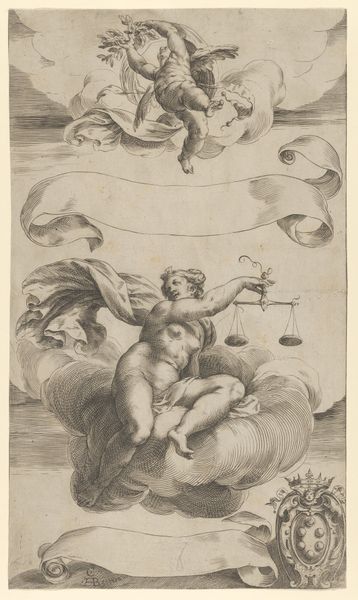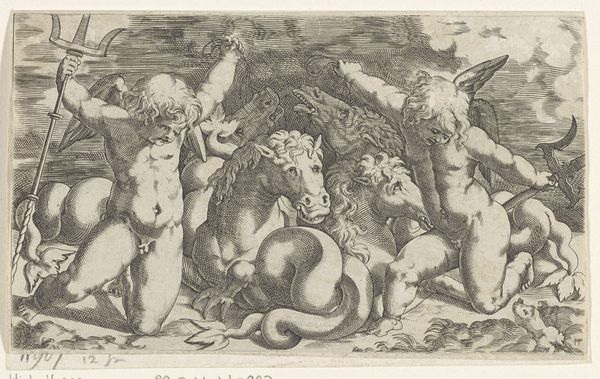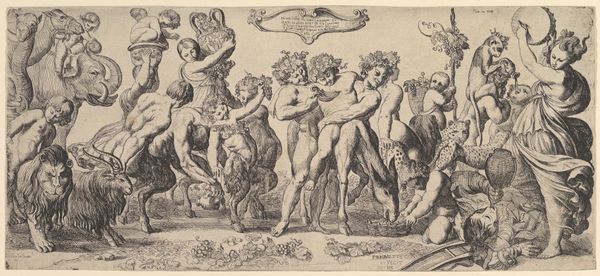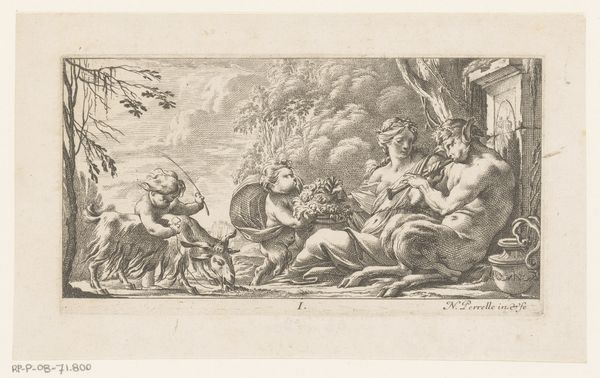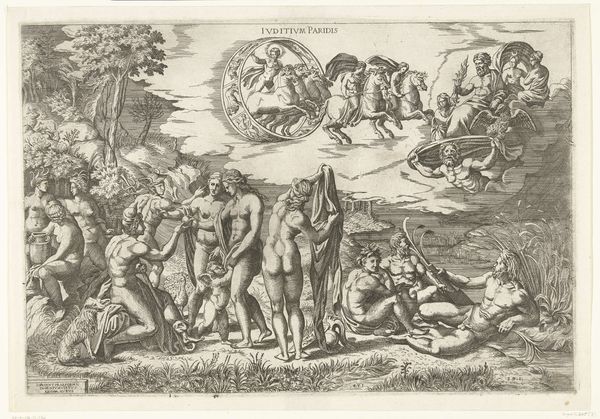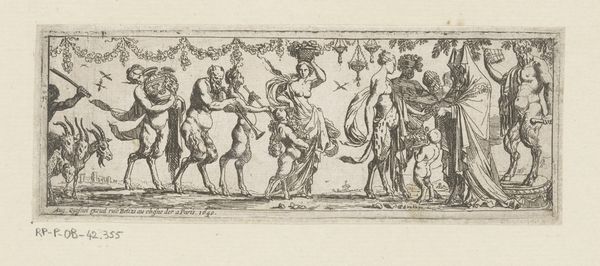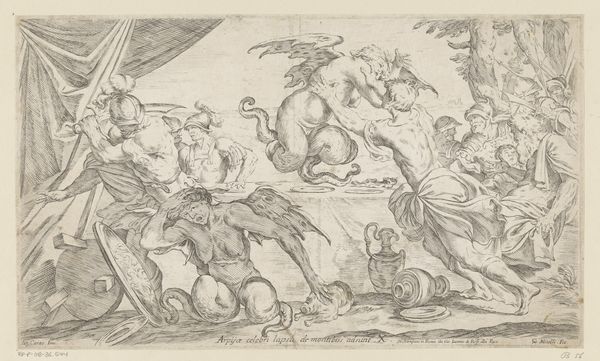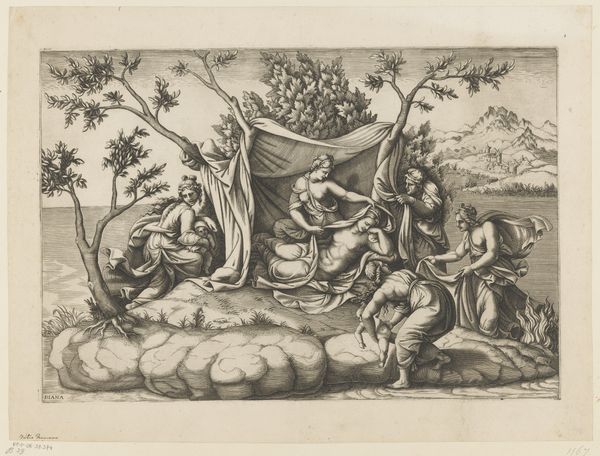
Zeegodinnen met in het midden Galathea, voortgetrokken op een vaartuig 1608 - 1650
0:00
0:00
print, etching, engraving
#
ink drawing
#
baroque
# print
#
etching
#
landscape
#
figuration
#
history-painting
#
nude
#
engraving
Dimensions: height 142 mm, width 416 mm
Copyright: Rijks Museum: Open Domain
Curator: This etching, dating roughly from 1608 to 1650, is titled "Sea Goddesses with Galatea in the Center, Pulled on a Vessel." It’s attributed to Pierre Brebiette. Editor: It’s an incredibly busy composition, isn't it? So many figures crowded into a single scene. Almost claustrophobic despite the implied vastness of the ocean. Curator: Indeed. The Baroque style lends itself to dynamism and complexity, wouldn't you agree? Note how Brebiette utilizes a network of interwoven lines to depict movement and texture. Consider the swirling waves and the billowing drapery. Editor: What strikes me is the process of creating such an elaborate scene with etching and engraving. The labor-intensive, subtractive method of working with metal to produce multiple images. What purpose would such production serve? Curator: Its dissemination, of course! The intention, perhaps, was to propagate an idealized classical vision. Examine the figures themselves: idealized forms referencing classical sculpture, presented in dynamic poses, the whole forming an elaborate allegory. Editor: And is the print meant to function as a standalone artwork, or a template of sorts? Given that history painting served the elites of the time, how might such prints influence taste, fashion, or even political symbolism? Curator: Good questions. Prints such as this absolutely functioned as a visual vocabulary influencing decorative arts and other artistic mediums of the period. In terms of semiotics, each gesture, each attribute, conveys a specific meaning within the context of classical mythology and humanist scholarship. The symbolic weight would be far more meaningful to the audience of the time. Editor: This returns us to its materiality and how Brebiette's choices concerning ink and engraving techniques ultimately served cultural and political functions. It makes me reconsider the implications behind classical ideals. Curator: A fruitful discussion. This artwork really encourages the intersection between formal interpretation and an examination of historical contexts. Editor: Absolutely, providing us a better picture of cultural and aesthetic material circulating in the 17th century.
Comments
No comments
Be the first to comment and join the conversation on the ultimate creative platform.
